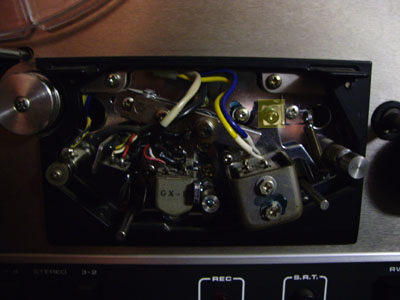Assuming you have a tape that's known to have been recorded on a properly aligned machine (an old school prerecorded tape), a little computer with an audio card and some editing software, it should be pretty easy to figure out the relative output level of anything that passes through your deck's play head. Most audio editing software will give you some way to determine the decibel (output) level of anything you record. In cool edit pro, you can get statistics for anything you record and in particular, an histogram showing for any decibel level (x axis), the percentage of time the recording plays at that output level. The more shifted to the right (higher decibel level) the histogram is, the louder the recording is. The free audio editing software audacity can do pretty much the same thing, if you don't have cool edit pro. It'd be easier if you could get your hands on a single tone alignment tape but those are hard to come by and are pretty expensive. Indeed, in that case, you would just look for maximum output level looking at the VU-meter on the tape deck or the audio editing software. Because a pre-recorded music tape has a bunch of tones, you have to look at the frequency histogram and see how much it shifts to the right to have an idea of the output level.
The bottom line is to be able to tell which, among two recordings of the exact same passage on the prerecorded tape, has greater output. If you record something on the tape with the screw "as is" and record the exact same thing with the screw turned a quarter turn, say, clockwise and it turns out the output is not greater, then the next step is to return the screw to the original position and turn it a quarter turn, this time, counter-clockwise. If, on the other hand, the output level ends up being greater, then the next step is to turn the screw another quarter turn clockwise. If you keep comparing recording output levels for different screw positions, pretty soon you will find the screw position that gives maximum output (or close to it).
Now, the problem with using a prerecorded tape is that the left and right channels may not have the same output level. So, when you look for maximum output, you have to consider one channel and stick with it. Once you are satisfied with one channel, you should double check that the output level for the other channel is maxing out as well. It should be pretty close. Aligning the head would be much easier with a calibration tape that has the same output level on the left and right channels since you could just maximize the mono output (the sum of the left and right channels) or alternatively, minimize the difference between the two channel output levels.
The AKAI GX-280D has a single play head, which means that when the the tape reverses direction, the play head gets shifted (automatically). Of course, there is a screw to adjust the amount of shifting. One can can adjust the reverse play height the exact same way as we did for the forward play height. My very own AKAI GX-280D does not work in reverse (it used to but never at the same level as forward) so can't really talk about it that much. In any case, reverse playing is in my opinion NEVER as good as forward playing, so why bother anyway?
Alignment of the recording head is more involved since you have three screws to contend with. Together, they control head height and azimuth (how parallel the head is to the tape). We will delve into record head alignment, and in particular azimuth alignement in later posts.

This is my beloved AKAI GX-280D with the head cover removed. Don't be fooled by the 280 moniker because it predates other AKAI GX models with lower model numbers, like the 265. As you can see, there are just three heads and the play head does double duty as it shifts to play in reverse (yes, the 280 can play in reverse).

From left to right: erase head, recording head and play head. The play head adjustment screw is shown in the yellowed box.
This video shows you how to align the play head using a prerecorded tape, a pc and some audio editing software (cool edit pro).
No comments:
Post a Comment